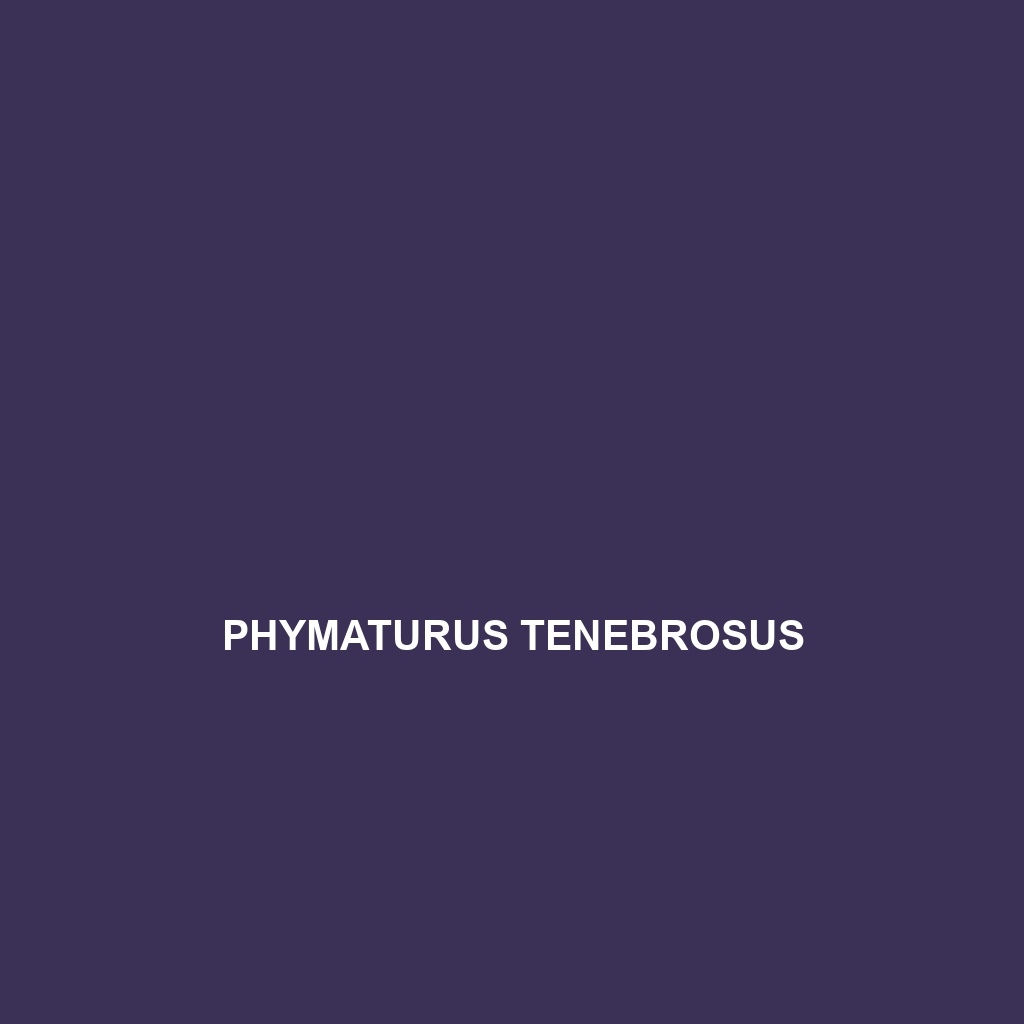Common Name
Phymaturus tenebrosus
Scientific Name
Phymaturus tenebrosus
Habitat
Phymaturus tenebrosus, commonly known as the dark phymaturus, is primarily found in the temperate forests and shrublands of Argentina. This species prefers rocky and arid environments, often utilizing crevices and rocky outcrops for shelter and thermoregulation. The climate in this region predominantly features a dry season, with some areas experiencing a Mediterranean climate characterized by wet winters and dry summers. The presence of tussock grasses and various endemic plant species supports a unique ecosystem that is vital for their survival, making habitat conservation crucial.
Physical Characteristics
Phymaturus tenebrosus is distinguished by its moderate size, commonly reaching lengths of approximately 20 to 25 cm. Males tend to be slightly larger than females. This lizard exhibits a robust body with a distinctive coloration that ranges from dark gray to brown, often adorned with lighter spots or bands that aid in camouflage against the rocky substrate. Its limbs are strong, with well-developed claws that facilitate climbing. The head is relatively large with prominent, well-defined labial scales, and its eyes are typically dark and slightly bulging, enhancing its ability to spot predators and prey in its dimly lit habitat.
Behavior
The behavior of Phymaturus tenebrosus is quite fascinating. These lizards are primarily diurnal, actively foraging during the daytime, although they can exhibit nocturnal behavior in response to extreme temperatures. They engage in territorial displays, especially during the breeding season, which includes elaborate visual signals such as head bobbing and body movements to assert dominance. Mating rituals can be elaborate, involving a series of displays that enhance male attractiveness. They are also known for their solitariness; while they may share basking areas, they typically prefer to live alone within established territories.
Diet
Phymaturus tenebrosus is predominantly an insectivore, feeding on a variety of invertebrates, including beetles, ants, and spiders. This diet is complemented by occasional herbaceous plant material, making them facultative omnivores. They display opportunistic feeding patterns, adjusting their diet based on seasonal availability. Their foraging behavior often includes a methodical approach, where they carefully scour their environments for food, demonstrating both agility and stealth in their hunting methods.
Reproduction
The reproductive cycle of Phymaturus tenebrosus is typically marked by a specific mating season which occurs in the spring. Mating involves a courtship ritual where males perform specific displays to attract females. Following successful mating, females have a gestation period of approximately two to three months before giving birth to live young, which may range from 4 to 9 offspring per litter. Parental behaviors are minimal, as the young are independent immediately after birth, but the choice of nesting site can be crucial for their initial survival.
Conservation Status
Currently, Phymaturus tenebrosus is classified as vulnerable due to habitat loss and fragmentation resulting from urban development and agricultural expansion. Conservation efforts are underway, including habitat restoration initiatives and further research into population dynamics. The preservation of rocky habitats is critical for their survival, as these areas provide essential resources for thermoregulation and predation avoidance.
Interesting Facts
One of the most intriguing aspects of Phymaturus tenebrosus is its ability to adapt to extreme environmental conditions. This species has specialized behaviors such as sun basking and burrowing to manage thermoregulation effectively. Additionally, they have been noted for their ability to communicate via chemical signals, such as pheromones, which are important for establishing territory and attracting mates, a unique trait among lizards.
Role in Ecosystem
Phymaturus tenebrosus plays a significant ecological role within its habitat. As insectivores, they help control insect populations, thereby maintaining a balance within the ecosystem. Their interactions with the soil and plant roots also contribute to nutrient recycling, making them a vital component of their environmental community. As a prey species, they serve as an important food source for various predators, including birds of prey and small mammals, also highlighting their role in the food chain.
